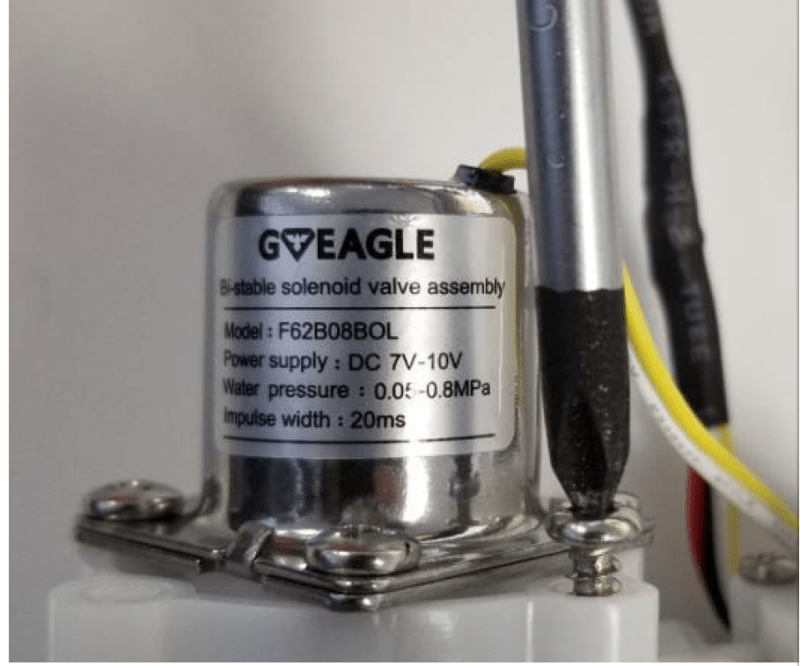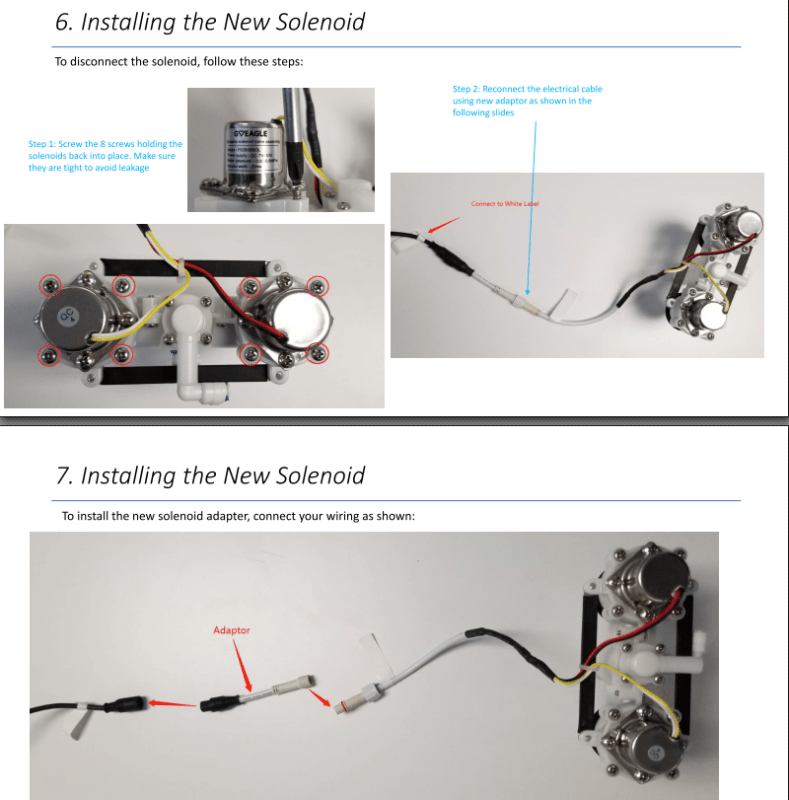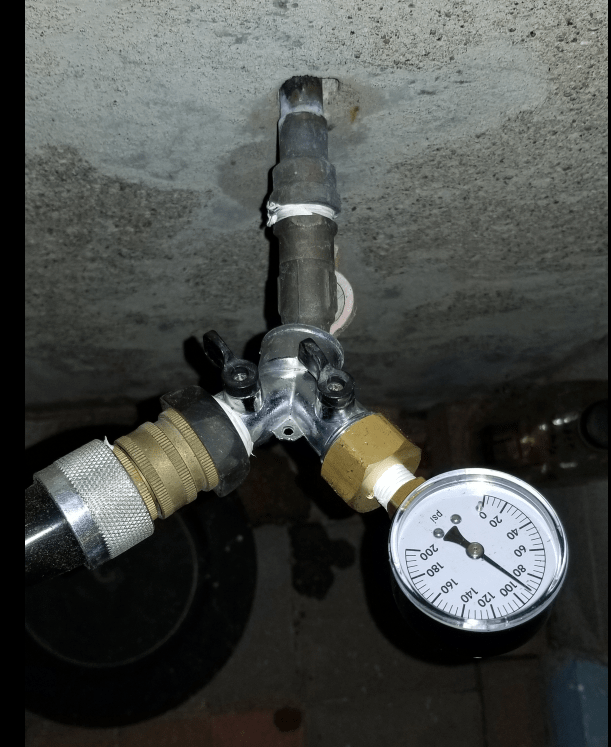MiniMe4Eng
Electrical
I have a smart toilet (Ove Stan) that is built using this valve

Here is the valve manufacturer page but I can't say exactly which one of those is my valve.
It is acting strange as described below
I called the toilet manufacturer and they want me to replace the entire assembly
Here are the directions they sent me

Here is how the toilet works: when I flush the toilet there is two valves that open in sequence:
he left one in the above picture is what they call the whirlpool valve which is cleaning the toilet bowl before flushing it.
it basically sends water to make sure that all goes to the bottom of the toilet.
After that this valve closes and a second one situated at the bottom of the toilet opens and it flushes/pushes everything into the drain.
The problem: the wirlpool valve is not working any more not as it used to. In normal conditions it won't open at all anymore.
However by accident I discovered that if I open the sink tap half way that decreases the water pressure in the pipe that supplies both the toilet and the sink and then if I flush the toilet while the water is running everything works relatively normal. Obviously there is a lower pressure at the bottom valve in the toilet but it is still enough to push everything into the drain
I am not sure if the valve is broken or it is that the water pressure is too high and I should try to lower it at the toilet supply end.
That end is controlled by a SharkBite 1/2 x 1/2 Inch MIP Straight Stop Valve, Quarter Turn, Push to Connect Brass Plumbing Fitting but I can definitely put something else there.
I do not trust the manufacturer who is telling me to buy the entire assembly and to replace it.
That generates more profit for them and it seems like a waste to me. Besides that it will be difficult to access the back side of the toilet to remove the assembly, I would practically need to remove the toilet because it is installed too close to the wall.
Based on the valve manufacturer pictures it should be easier to replace just the valve from above.
If based on what you see in the picture (Model F62B08BOL) you know of an equivalent please let me know
The water pressure measured at an outside water tap is shown below. That is located just before the pipe enters that bathroom.
It shows around 90PSI, the valve is rated for 0.8Mpa (116PSI)

Here are the toilet details, I can't find the pressure requirements

Here is the valve manufacturer page but I can't say exactly which one of those is my valve.
It is acting strange as described below
I called the toilet manufacturer and they want me to replace the entire assembly
Here are the directions they sent me

Here is how the toilet works: when I flush the toilet there is two valves that open in sequence:
he left one in the above picture is what they call the whirlpool valve which is cleaning the toilet bowl before flushing it.
it basically sends water to make sure that all goes to the bottom of the toilet.
After that this valve closes and a second one situated at the bottom of the toilet opens and it flushes/pushes everything into the drain.
The problem: the wirlpool valve is not working any more not as it used to. In normal conditions it won't open at all anymore.
However by accident I discovered that if I open the sink tap half way that decreases the water pressure in the pipe that supplies both the toilet and the sink and then if I flush the toilet while the water is running everything works relatively normal. Obviously there is a lower pressure at the bottom valve in the toilet but it is still enough to push everything into the drain
I am not sure if the valve is broken or it is that the water pressure is too high and I should try to lower it at the toilet supply end.
That end is controlled by a SharkBite 1/2 x 1/2 Inch MIP Straight Stop Valve, Quarter Turn, Push to Connect Brass Plumbing Fitting but I can definitely put something else there.
I do not trust the manufacturer who is telling me to buy the entire assembly and to replace it.
That generates more profit for them and it seems like a waste to me. Besides that it will be difficult to access the back side of the toilet to remove the assembly, I would practically need to remove the toilet because it is installed too close to the wall.
Based on the valve manufacturer pictures it should be easier to replace just the valve from above.
If based on what you see in the picture (Model F62B08BOL) you know of an equivalent please let me know
The water pressure measured at an outside water tap is shown below. That is located just before the pipe enters that bathroom.
It shows around 90PSI, the valve is rated for 0.8Mpa (116PSI)

Here are the toilet details, I can't find the pressure requirements
